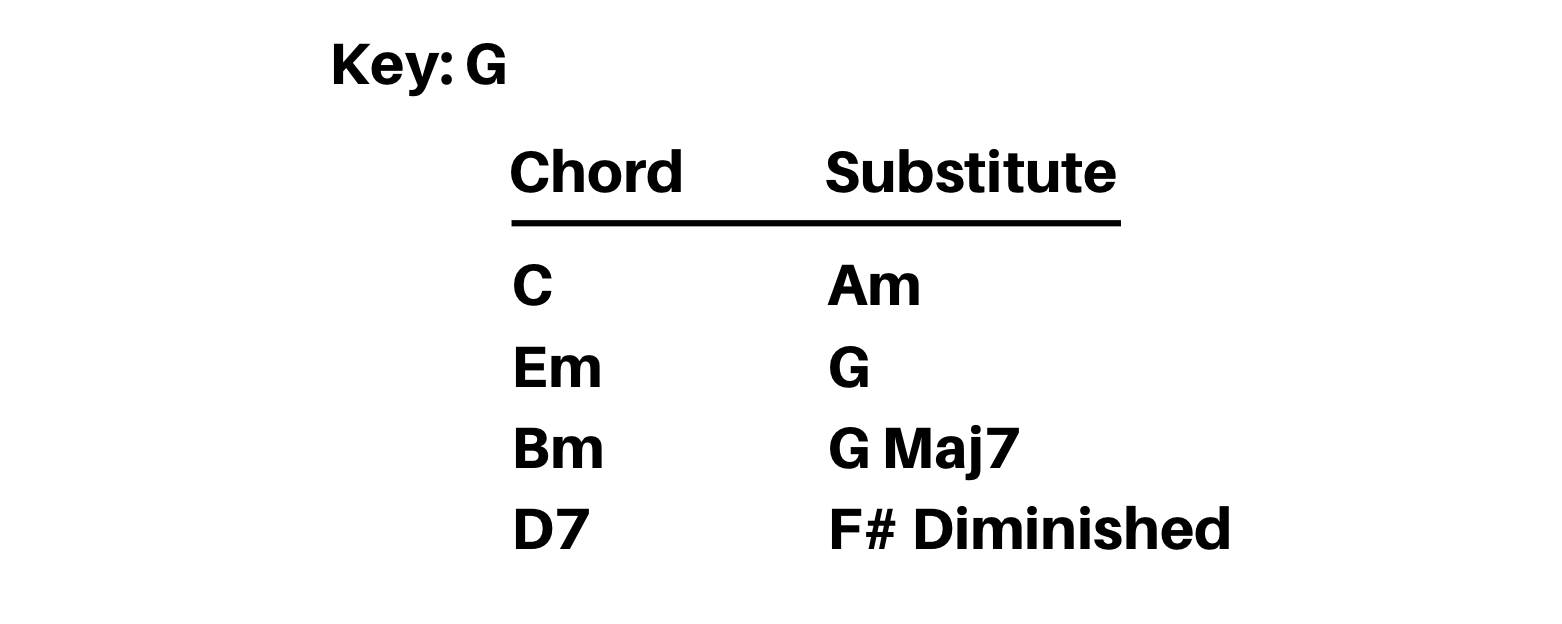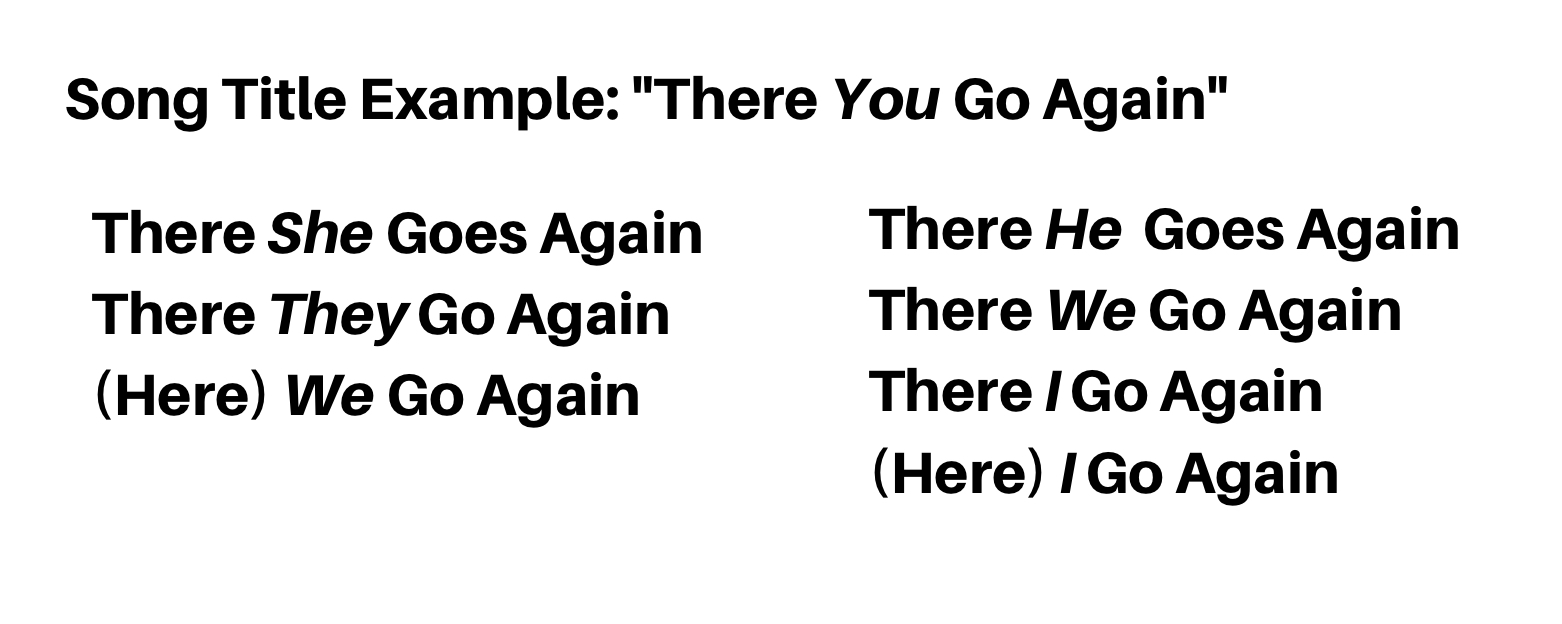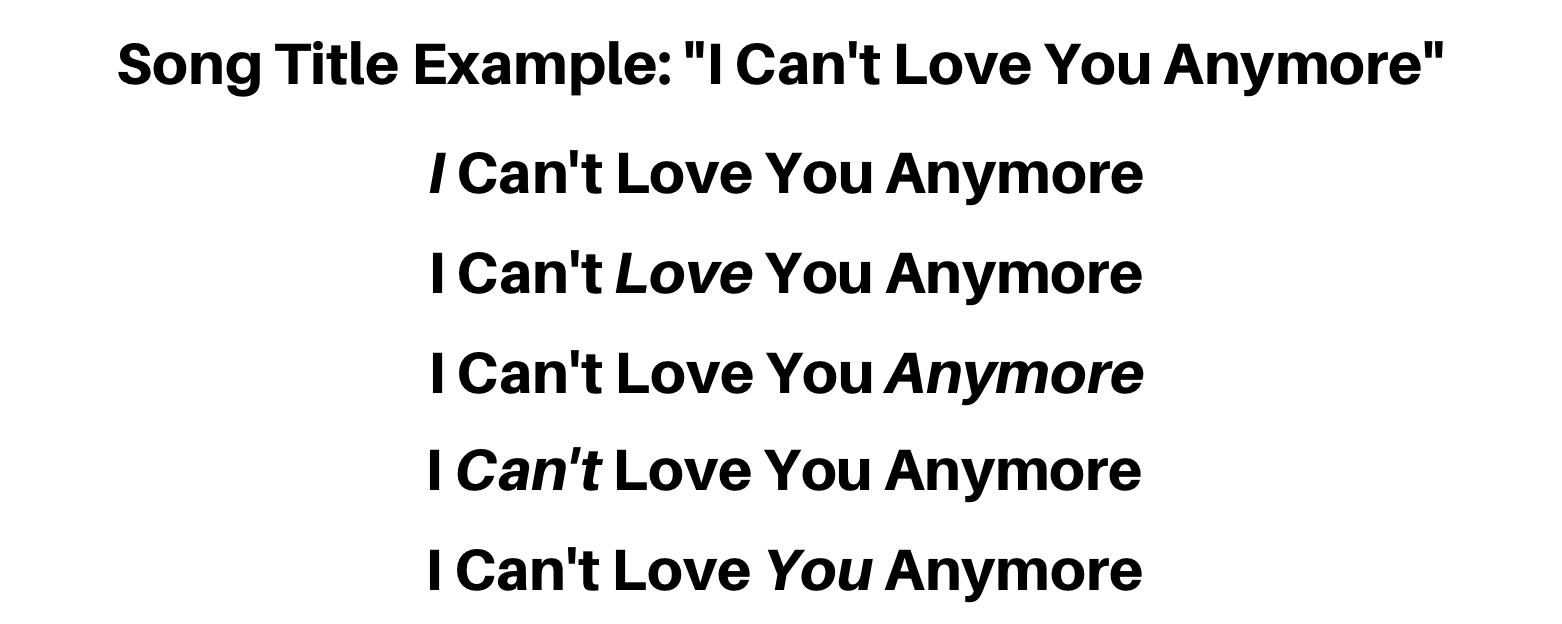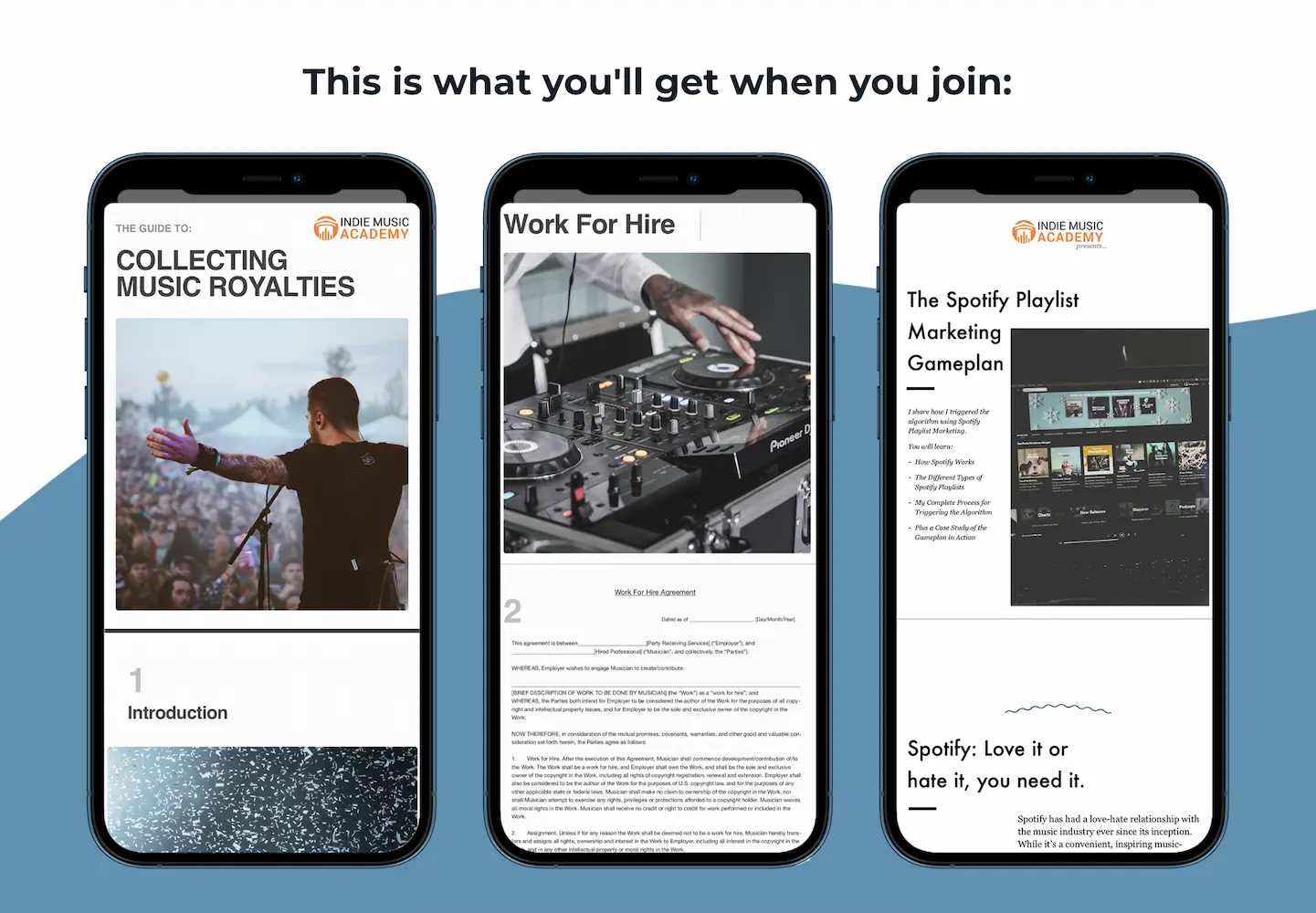10 60-second Pro Songwriting Tips You Can Use Now

It’s easy to feel stuck when songwriting, like getting past the basic song idea. You can feel stuck as a singer/songwriter hoping to find ways out of using common chord progressions. Even if you’re an experienced songwriter, you may want to hone your craft in order to open doors to music publishers, and make your break in the music industry. Regardless of where you are, these quick and essential songwriting tips will help you take your songs to the next level in your music career.
Tip #1 Writing The Big Chorus
One of our expectations when listening to a hit song is the Big Chorus. We’ve been conditioned to wait for it, and we expect to get it. Obviously, there are many examples of hit songs whose choruses would not be considered “Big,” and some don’t even have choruses. As far as commercial music is concerned though, Big Chorus songs really “knock ‘em out of the park!”
The over-arching principle of the Big Chorus song is the principle of Delayed Gratification. Delayed Gratification is an important component of healthy human psychology, and it is the ability to wait in order to obtain something we want. If our expectations are high enough we are likely to wait for their fulfillment, as long as the promise of that fulfillment remains interesting and doesn’t take too long to get.
So what sort of Delayed Gratification are we expecting from a Big Chorus?
Harmonic Resolution:
Since the function of the 1 chord is to provide stability, permanence, and the feeling of arrival, delaying resolution to the 1 chord until the top of the chorus, while setting up anticipation for it in the sections preceding it, is a powerful tool for delivering the Big Chorus. And in this context, nothing is more effective than denial / delay of the 57-1 cadence: Key of C: G7 (57) - C (1)
When the Big Chorus finally arrives the tonic note of the scale (1) in the melody delivered on the downbeat is a great way to reinforce this sense of arrival and gratification.
The message in the title needs to be as big as the chorus, too!
Tip #2 Take a Right!
If you find yourself up against the dreaded "curse of the second verse" not knowing how to proceed, what to say next, or where to go - ”Take a Right!" Get off the road you're on and get yourself lost! If you're not lost once you've gotten lost, you may discover new things to write about. Insert a foreign detail, like the quick cut in a movie; go somewhere completely different, say something you can't yet support, or even fully understand, and just “see what happens…”
“As you write,” John Steinbeck says, “trust the disconnections and the gaps. If you have written what your eye first saw and you are stopped, see again. See something else. Take a leap to another image. Don’t require of yourself that you understand the connection. Some of the most brilliant things that happen in fiction occur when the writer allows what seems to be a disconnected image to lead him or her away from the direction that was being taken.”
Tip #3 Simple Modulation
Modulation (to change key) can result in subtle unexpected moments which “surprise and delight” your listeners. The simplest way to think of modulation: to establish a new key (1) go to the new key’s 57 chord first:

After modulating, you can either remain in the new key, modulate back to the original key, or modulate again!
Tip #4 Simple Chord Substitution
Tired of using the same old chords and chord progressions? A simple rule for chord substitution: a chord can substitute for another chord if they share at least one note in common.

Tip #5 Wise Guys
- “Originality is what occurs when something new arises out of what’s already been done.” - Stephen Dunn
- “The conscious intention of being ‘original’ leads to exaggeration.” - W. H. Auden
- “Ultimately what the melody writer strives for is uncompromised originality that is so carefully and logically presented that it somehow evokes nostalgia. This is the territory wherein the great songs are discovered. Create something new that sounds familiar.” - Jimmy Webb
- “Anybody can get into a (song), it takes a (songwriter) to get out of one.”-Robert Frost (speaking about poetry)
- “How can I know what I think until I’ve seen what I’ve said.”-W. H. Auden
- “Freely chosen, discipline is absolute freedom”-Ron Serino
- “All great songwriting is, in a sense, imitation of great songwriting”-Jimmy Webb
- “Talent Borrows. Genius Steals.”-Oscar Wilde
- “The knowledge of something doesn’t make it less beautiful.”-Richard Hugo
- “Trust your talent. Make the need felt which only you can provide; create the taste by which you shall be enjoyed.”-William Wordsworth
- “Don’t let the truth get in the way of a good story.”-Mark Twain
Tip #6 Form follows Function
Things that look the same (form) should do the same things (function), and things that look different should do different things.
Simply put, song intros are different from verses-are different from choruses-are different from turnarounds-are different from bridges-are different from-etc., and should do different things in different ways:
- Contrasting melodic rhythms in different sections
- Contrasting melodic range
- Contrasting rhyme scheme
- Different chord changes
- How fast chords change (Harmonic Rhythm)
- Section length (not always)
Tip #7 The Bridge
The analogy of an actual bridge is helpful: to transport you from one familiar area (verses, choruses), over an unfamiliar area (bridge), and back to a familiar area again, or on to a new place. If you’re writing within the verse/chorus or verse/refrain form ask yourself:
Do I Need a Bridge?
- Does your song tell a story with a beginning, middle, and end?
- Is your song under 3 minutes but feels complete?
- Can you add a solo over the verse or chorus music?
If you answered yes to any/all of these questions you probably don’t need a bridge. If you’ve determined that you do need a bridge, the song components should contrast with anything the listener’s experienced so far (Form follows Function).
There are many choices as to where to begin a bridge (usually determined by the emotional/narrative arch of the song), and where it leads.
Bridges don’t always have to take a musical “back-seat” to choruses.
Some examples of bridges as major sections:
- She’s Always a Woman to Me (Billy Joel)
- I Just Got Started Lovin’ You (Recorded by James Otto)
- Neither One of Us (Wants To Be The First To Say Goodbye) (Recorded by Gladys Night & The Pips)
- If Only You Could See Me Now (Recorded by Celine Dion)
Tip #8 Try Different Personal Pronouns
Try different personal pronouns before deciding on a direction for your title/idea. Personal pronouns designate the person speaking (I, me, we, us), the person spoken to (you), or the person or thing spoken about (he, she, it, they, him, her, them).

Tip #9 Emphasize Each Word in the Title
How we say something conveys as much meaning as what we say. Emphasizing each word in a potential title can uncover possibilities you may never have suspected.

Tip #10 Begin With the End In Mind
If you want to hone in on your songwriting process, get a song past the initial idea, or maybe you find yourself stuck with the song structure, these songwriting tips. Here are some songwriting ideas and songwriting techniques to help you in the creative process.
Like other goals in life, it’s a good idea to mentally work backwards through a song idea. If you know where you want to go, you know what you need to do to get there. It can also inform you as to the question:
- “Is the journey worth it (Is there enough of a story here?)"
- “Is it interesting enough to want to continue? (Is this worth the listener's time?)"
- "Should I explore another idea? (Is this worth my time and potential recording costs?)"
You have to gain the confidence to know when a good idea isn’t the last good idea you’re gonna have. Taking the time, ahead of time, to work backwards through a song idea can save a lot of future frustration.
Whether you're a beginner songwriter or an experienced one, we're here to help you along your journey. Check out our free resources, at the link below!




